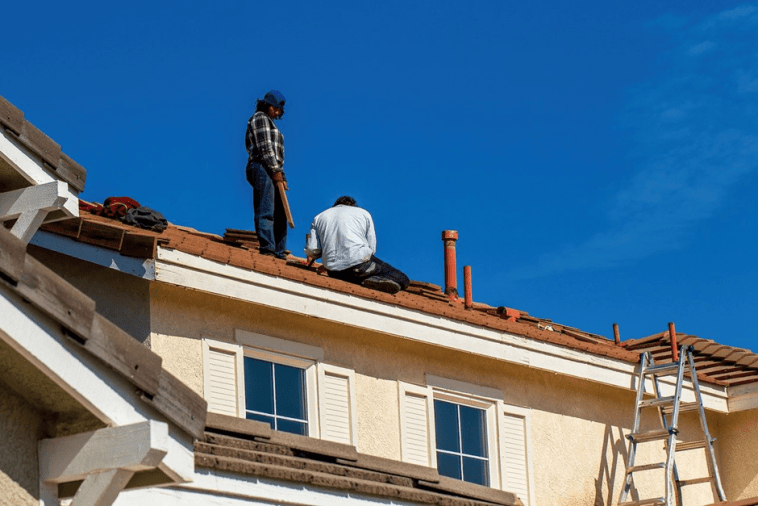In Pittsburgh, Pennsylvania, where the weather can swing from hot, humid summers to freezing, snowy winters, maintaining your roof is critical to protecting your home. The roof is your home’s first line of defense against the elements, and neglecting it can lead to costly and extensive damage.
Regular roof maintenance not only extends the lifespan of your roof but also ensures your home remains safe and comfortable. Whether you’re dealing with the aftermath of a harsh Pittsburgh winter or preparing for summer storms, understanding the basics of roof maintenance is key.
This guide will provide you with easy-to-follow tips to keep your roof in top condition, saving you from unexpected repairs and prolonging the life of one of your home’s most important features.
Recognizing When It’s Time for Roof Replacement
Knowing when to replace your roof is a crucial aspect of home maintenance. Some tell-tale signs that your roof may need replacement include widespread shingle damage, persistent leaks, and an aged appearance. In regions like Pittsburgh, where roofs are subjected to severe weather conditions, these signs might appear sooner than expected.
In Pittsburgh roof replacement is a significant decision, often necessitated by the area’s harsh weather conditions. It involves careful consideration of the roof’s age, the extent of damage, and the cost-effectiveness of replacement versus repair. Homeowners should ideally consult with local roofing professionals who understand the specific challenges of Pittsburgh’s climate. This ensures that any decision to replace a roof is based on a thorough assessment, providing long-term protection and value for the home.
Regular Cleaning and Debris Removal
A clean roof is a healthy roof. Debris, like leaves, twigs, and dirt, can accumulate on your roof and in your gutters, leading to water pooling and potential damage. In cities like Pittsburgh, where trees are abundant, this can be a particularly pressing issue.
To maintain your roof, regularly clear away any debris. This task can usually be done with a ladder, gloves, and a broom or leaf blower. However, safety should always be your top priority; if you’re uncomfortable working at heights, it’s best to hire a professional.
Keeping your gutters clean is equally important. Clogged gutters can cause water to back up and damage your roof, siding, and home’s foundation. Regular gutter cleaning, especially after heavy storms or during the fall when leaves are plentiful, can prevent these issues.
Inspecting for Damage and Repairs
Regular inspections are key to catching and addressing roof issues early on. Look for signs of damage, such as missing, cracked, or curling shingles, which can be common in fluctuating climates like Pittsburgh’s. Also, check for damaged or rusted flashing around chimneys, vents, and other roof penetrations, as well as cracked sealants.
If you spot any of these issues, quick repairs can prevent further damage. For minor issues, DIY fixes like replacing a few shingles or resealing a joint might be sufficient. However, for more extensive damage, or if you’re unsure of the severity, consulting a professional is advised. Regular maintenance checks, ideally in the spring and fall, can keep your roof in good condition and prevent small problems from becoming major ones.
Ensuring Proper Ventilation and Insulation
Proper roof ventilation and insulation are crucial, especially in regions with cold winters and hot summers like Pittsburgh. Adequate ventilation helps regulate temperature and moisture levels in your attic, preventing issues like ice dams in winter and excessive heat in summer. This regulation not only extends the life of your roof but also improves your home’s energy efficiency.
Inspect your attic to ensure it’s properly insulated and that ventilation points, such as soffit and ridge vents, are not blocked. The insulation should be evenly distributed and in good condition, without any wet spots or mold, which can indicate a roof leak. If you’re unsure about your roof’s ventilation or insulation status, a professional assessment can provide clarity and recommendations for improvements. Good ventilation and insulation not only protect your roof but also contribute to a more comfortable and cost-efficient home.
Preventing and Addressing Moss and Algae Growth
Moss and algae are more than just cosmetic issues; they can cause significant damage to your roof. These growths retain moisture against the roof surface, leading to rot and deterioration of roofing materials. In damp climates, preventing moss and algae is especially important.
To prevent these growths, ensure your roof gets enough sunlight and is free of debris. Trim overhanging tree branches to reduce shade and debris accumulation, both of which contribute to moss and algae growth. For existing growth, products like zinc or copper strips installed at the ridge of the roof can be effective. These metals release particles that inhibit growth when it rains.
If your roof already has moss or algae, it’s important to address it carefully. Harsh scraping or power washing can damage shingles. Instead, use a moss removal solution available at most home improvement stores or a mixture of water and bleach sprayed on the affected areas. After applying the solution, gently brush off the growth with a soft-bristle brush. Remember, safety comes first; if accessing your roof is risky, hiring a professional is the safest option.
Scheduling Professional Inspections and Maintenance
While regular personal inspections are vital, professional inspections are a critical component of roof maintenance. Professionals have the expertise to identify potential problems that you might miss. They can spot early signs of wear and suggest preventative measures to extend the life of your roof.
Experts recommend having your roof professionally inspected at least once a year, ideally after the harsher seasons. In places with severe weather conditions, like heavy snow or frequent storms, more frequent inspections may be necessary. A professional can also help with routine maintenance tasks, such as cleaning gutters or checking for proper ventilation, which can be challenging to handle on your own.
During the inspection, a professional will check for damaged or missing shingles, issues with flashing and sealant, structural integrity, and any signs of water damage or leaks. They can also provide valuable advice on any necessary repairs or improvements, ensuring your roof remains in optimal condition.
Knowing Your Roofing Material
Different roofing materials have different maintenance needs. Knowing the specifics of your roofing material is essential for proper care. For example, asphalt shingles are the most common roofing material due to their affordability and ease of installation. They require regular checks for cracking, curling, or loss of granules.
Metal roofs, while more durable, need inspections for rust, dents, or loose seams. Tile roofs, popular for their aesthetic and durability, can crack or chip and should be inspected for broken or displaced tiles. Wooden shingles or shakes require checks for rot, warping, or moss growth.
Conclusion
Effective roof maintenance is about consistent care and attention to detail. From keeping it clean and debris-free to scheduling regular professional inspections, each step plays a vital role in extending the life of your roof. Understanding the specific needs of your roofing material and addressing issues like moss and algae growth are also crucial. By following these simple yet effective maintenance tips, you can ensure your roof remains in excellent condition, protecting your home for years to come.




